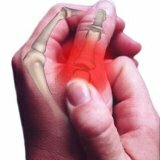Types of knee injuries

The knee joint is the largest and most complex joint of the body. The knee consists of the bone of the leg and thigh, as well as the patella. All these components are connected together by muscles, ligaments and tendons. In the center of the joint there are two cartilages of crescent shape and menisci, which are shock absorbers of the knee joint. There are many injuries to the knee and each of them leads to a restriction of movement and is accompanied by severe pain.
Knee joint injury
There is a bruise due to a knee-hitting with a solid object, when falling on a knee, jumping from a height, or with a sharp squat, which is accompanied by a jerk in the standing position. This causes severe pain in the knee and swelling of the joint. There may also be accumulation of fluid in the knee joint. In the treatment, the fluid is sucked from the cavity of the knee joint. After the first procedure on the knee, always place a gingival limb on the area from the toes to the top of the thigh. If the bruise is serious, then perform an operation and remove the meniscus. Longuet is usually not imposed, but immediately begin to perform special exercises.
Knee joint injuries
Bruising, or hemarthrosis, occurs as a result of various types of injuries. In this case, the outline of the knee becomes smoothed, the joint increases in volume, and under the skin there is a bruise. The patient complains of pain in the knee and difficulty with the movement of the foot. The size of bruising in the knee is determined by balloting the knee. Bruising in the knee joint can sometimes reach very large sizes - up to 150 ml. In the treatment of bruising, the blood is sucked from the cavity of the knee joint. If necessary, sucking the blood is carried out several times. After the procedure, a gypsum longite is installed. Moving in the first 10 days after the procedure can only be on crutches and you can not step on the aching leg. At the end of time, the gypsum bandage is removed and the knee cap is put on for up to 6 months. The length of wearing the knee depends on how much the injury was, what the size and nature of the bruise.
Meniscus damage
This trauma is complex, quite common and unfortunately, difficult to diagnose. It arises because of a sharp movement in the joint with a simultaneous rotation of the hip. In this case, the shin and foot are fixed in one position. This position of the foot can provoke the crushing of the meniscus with bones between which it is located or its complete rupture. Such a trauma is accompanied by bruising, as well as severe pain and inability to straighten the leg. Treatment of this type of joint injury is performed with the help of surgical intervention with anesthesia. Also it is necessary to do an x-ray of the knee joint. The fact is that the restriction in movement and hemorrhage can pass independently one week after the injury, so you can not even find a break of the meniscus. Thus, if you suspect a rupture of the meniscus, you need to see a doctor urgently.
Knee fracture
Such a joint injury occurs when a direct fall on the knee. Trauma is accompanied by bruising. Also, the victim is unable to keep his leg in a straightened state. Unfortunately, it is also problematic to diagnose a fracture of the knee, as the symptoms of trauma are similar to the rupture of one's own ligament.
Rupture of ligaments
This injury occurs when falling from a very high altitude, with strong pressure on the shin, or after a car accident. We can say that the rupture of ligaments is a sports injury, since such damage is typical for hockey players or football players, who have all the pressure and blows to their feet. Quite often you can hear such a diagnosis as a sprain, but it's not quite right. The fact is that the ligaments themselves can not stretch. Such a diagnosis is called incomplete rupture of ligaments, or so-called tearing. In the knee joint, there are several different ligaments, and their rupture can be accompanied by bruising, a symptom of the "drawer" or instability in the joint. Usually treat a rupture of ligaments surgically.



